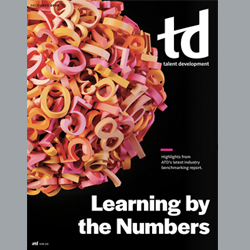TD Magazine Article
A Contingent Predicament
A considerable segment of the contingent workforce is not being trained for their jobs.
Mon Dec 02 2019

Bookmark
Talent development professionals don’t need to be convinced of the importance of training full-time employees—but new research from City & Guilds Group shows that training contingent workers may be just as important. Its Learning Insights 2019 study found that contingent workers (defined as freelancers, temp workers, or contractors) are a significant and growing population within the U.S. workforce. The research indicates that 91 percent of U.S. employers use contingent workers, and 57 percent anticipate that their use of contingent workers will increase over the next few years.
Despite the growing number of these workers, training for this population is still low, with 22 percent of employers not carrying out any training whatsoever with contingent workers.
Steve Lowenthal, CEO of Kineo USA (a business subsidiary of City & Guilds Group), explains that most organizations hire contingent workers because they have an urgent need to address, and “in that urgency, people forget that they need to train.” That’s dangerous, Lowenthal cautions, because, in reality, contingent workers need the same breadth of training as full-time employees.
Organizations should look at the opportunity costs of not training their employees and assess what skills a contingent worker needs to master to become a productive team member. Failing to do so, Lowenthal says, is “committing a risk and not maximizing the productivity” of these workers.
Moreover, the training that contingent workers do receive almost always focuses on compliance rather than organizational culture. “Workers need to start with understanding the values and norms of an organization,” Lowenthal explains, “but we often forget that when looking at contingent workers. We’re myopically focused on technical skills.”
If contingent workers can’t get along with their co-workers, they won’t be successful. They also will fail to understand how their organization prioritizes work. “Some companies move quickly, whereas others are more thoughtful and conservative,” Lowenthal notes. “These differences need to be made explicit, because otherwise there’s a real risk that the contingent worker will be disruptive to the team and workflow.”


